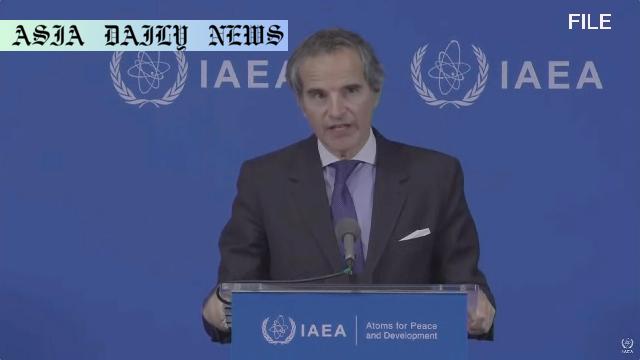IAEA: Iran’s nuclear program could be fully operational within months, despite severe damage caused by the US attack.
IAEA Director Rafael Grossi confirmed Iran’s nuclear facilities suffered severe but not total damage.
Iran could resume uranium enrichment in just months due to its industrial capacity.
US intelligence suggested Iran’s nuclear program setback isn’t permanent.

IAEA Confirms Partial Damage to Iran’s Nuclear Facilities
The Director General of the International Atomic Energy Agency (IAEA), Rafael Mariano Grossi, disclosed in an interview with CBS News critical insights regarding the state of Iran’s nuclear facilities following the recent U.S. attack. Grossi stated that while the damage sustained by the facilities was severe, it was far from total destruction. The situation, therefore, possesses certain alarming ramifications for nuclear security in the region. According to the IAEA chief, Iran retains substantial industrial and technological capacity, which may allow them to resume uranium enrichment within a few months or potentially even less.
President Trump’s Claims and Intelligence Assessments
U.S. President Donald Trump had earlier asserted that Iran’s nuclear capabilities were rendered void, describing the attack as having “obliterated” these facilities. This narrative, however, conflicted with intelligence reports that painted a more nuanced picture. Preliminary assessments indicated the attack set Iran’s nuclear advancements back by only a few months instead of permanently halting its progress. Grossi’s revelations reinforce these findings, underscoring the resilient nature of Iran’s nuclear program. This disparity between political claims and technical evaluations highlights the complexity in assessing the true impact of military actions on nuclear developments.
Uncertainty Regarding Enriched Uranium
Grossi also raised concerns over the whereabouts of Iran’s enriched uranium. While some of the stock may have been destroyed during the attack, it remains unclear if other portions were relocated beforehand. This lack of definitive knowledge adds another layer of unease regarding Iran’s nuclear program and further emphasizes the IAEA’s need to promptly engage in inspections. Grossi expressed the importance of gaining access to the facilities to provide a clearer understanding of the current situation and to ensure international agreements are upheld.
Iran’s Legislative Response and Future Implications
In reaction to recent developments, Iran’s parliament voted in favor of suspending cooperation with the IAEA, outlining a significant step toward reduced transparency. This decision may undermine international oversight and foster further distrust in the global community. The move highlights the increasingly fractured relationship between Iran and regulatory bodies like the IAEA, which have long collaborated to prevent potential nuclear proliferation. Additionally, such regulatory hesitations possess ripple effects that extend beyond arms control, influencing geopolitical alignments and regional stability in the Middle East.
Conclusion
The developments surrounding Iran’s nuclear program serve as a stark reminder of the intricate and multifaceted challenges tied to nuclear security. Grossi’s statements illustrate the complexities of the situation, underlining the necessity of international cooperation and timely inspections. Discrepancies between diplomatic rhetoric and technical realities must be carefully scrutinized to ensure informed decision-making. Meanwhile, Iran’s capacity to bounce back reflects both its industrial depth and the need for sustained global focus on addressing nuclear risks. As the situation evolves, transparency and strategic diplomacy will play pivotal roles in navigating these uncertainties.



Commentary
The Importance of Nuanced Understanding in Complex Geopolitical Issues
Addressing any developments related to nuclear proliferation, especially concerning a country as geopolitically sensitive as Iran, requires precision, diplomacy, and a clear-eyed view of the facts. The revelations by IAEA Director General Rafael Grossi highlight the severity of the U.S. attack on Iran’s nuclear infrastructure but also reveal gaps in understanding the long-term implications of such damages. Contrary to the political rhetoric that often simplifies or amplifies the outcomes of military actions, the technical assessment provided by the IAEA shows that Iran’s recovery capabilities are robust enough to combat these setbacks.
Challenging the Gap Between Political Rhetoric and Ground Reality
The disparity between President Trump’s assertive “obliterated” declaration and the intelligence assessments raises concerns. Military actions are fraught with complexities, and their implications often unfold beyond immediate outcomes. Such discrepancies could contribute to misinformed public perceptions, influencing how societies grasp the dynamics of nuclear risks and international interventions. It underscores the essential role of institutions like the IAEA in dispelling uncertainties and offering an impartial lens in interpreting ground realities.
The Need for Continued Vigilance and Collaboration
The concerns raised by Grossi about the possible movement of enriched uranium stress the need for international regulatory vigilance. If Iran indeed manages to resume its nuclear program soon, global powers must collaborate swiftly to prevent further proliferation risks. Addressing these issues also strengthens trust in international bodies, fostering greater global security. But Iran’s decision to potentially cut off cooperation with the IAEA signals a worrying progression that could undermine these attempts at transparency.
Conclusion
International diplomacy must continue evolving to handle situations as delicate as Iran’s nuclear trajectory. Rather than relying on rhetoric, tangible actions backed by evidence-based strategies are necessary. The world will undeniably need to pay close attention to this evolving narrative, treating nuclear security as a shared global responsibility. The challenges are abundant; however, with informed understanding and robust institutions, navigable pathways can emerge to ensure a sustainable and secure future.